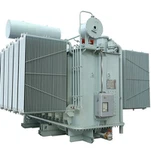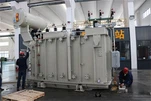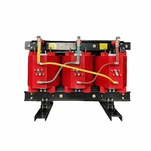The transformer core is made of silicon steel (also known as electrical steel or transformer steel) due to its specific magnetic properties that make it ideal for transformer applications. Here are the main reasons why silicon steel is chosen for transformer cores:

01
Low Core Losses
Silicon steel exhibits low hysteresis losses and eddy current losses when subjected to alternating magnetic fields. This property reduces energy losses in the form of heat during the operation of the transformer, making it more efficient.
02
High Magnetic Permeability
Silicon steel has a high magnetic permeability, which means it can easily magnetize and demagnetize in response to alternating currents. This property allows the core to efficiently transfer magnetic flux and facilitate the transformation of electrical energy between the primary and secondary windings of the transformer.
03
Saturation Flux Density
Silicon steel has a high saturation flux density, which refers to the maximum magnetic flux density it can hold before losing its magnetic properties. This property allows transformers to handle high magnetic flux levels without significant saturation, ensuring reliable and stable operation.
04
Reduced Eddy Currents
Silicon steel is specifically designed with a laminated structure, consisting of thin layers insulated from each other. This laminated construction helps to minimize eddy currents that can occur in the core when exposed to changing magnetic fields. Eddy currents can result in power losses and heat generation, so the laminated structure helps to mitigate these effects.
Overall, the use of silicon steel in transformer cores improves the efficiency, reduces energy losses, and enhances the performance of transformers, making it the preferred choice for this application.










